How downhole gauges are used as a part of the measurement, monitoring, and verification plan (MMV) for carbon capture & underground storage.
Carbon Capture & Underground Storage
Carbon Capture & Underground Storage (CCUS) is the process of storing high pressure, liquid carbon dioxide in a subsurface reservoir structure. The technology has been used for more than 40 years for enhanced oil recovery projects but has taken a new life as the world tries to dispose of greenhouse emissions.
Industrial facilities utilizing pre-combustion, post-combustion, or oxyfuel methods can implement carbon capture systems to positively influence sub-surface reservoirs, and/or reduce total carbon emissions. While the upfront costs of implementing these systems can be high, the increase in production efficiency and the financial incentives offered by governments around the world can be quite lucrative.
As governments, energy companies, and other industrial producers continue to invest in this technology, it’s critical that users implement the correct technology to ensure the efficiency and safety of their systems.
CCUS Safety
As with any manipulation of downhole reservoirs, it is critical that engineering teams ensure the safety of their interventions so as to not negatively disrupt neighbouring reservoirs or groundwater aquifers. And as many of these projects are driven by government regulations, it is critical that users comply with all regulations associated to carbon capture in their jurisdiction.
One of the key systems that all carbon capture reservoirs require is a reliable long-term downhole monitoring system. These are essential for the following reasons:
- Reservoir Management
- Leak Detection – Verification that CO2 is contained in the reservoir and that freshwater, gas, and oil formations are protected
- Assurance that the injection model is performing as expected
- Peace of mind for all public and private stakeholders that CO2 sequestration is safe
- Compliance with any legislative requirements
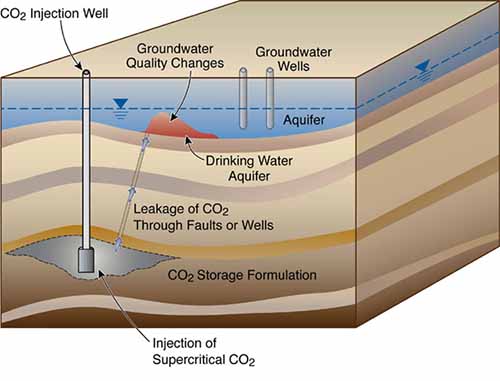
Figure 1: Carbon Capture Reservoir Diagram courtesy of (https://eesa.lbl.gov/)
Monitoring At Carbon Capture Facilities
Efficient monitoring of the facility and surrounding environment is critical for all carbon capture applications.
Not only does this help to ensure safety as discussed above, but it also ensures efficient operations and the protection of valuable system components.
While there are many different technologies implemented at CCUS facilities, the following are some of the most common, and most critical:
Criteria For Downhole Monitoring Success
Given the harsh environment and high cost of carbon capture systems, it’s critical that all monitoring systems are built for reliability and able to withstand the extreme conditions.
When it comes to the success of downhole pressure and temperature monitoring systems, these are some of the key criteria that users should look for.
- Longevity – Most CO2 storage facilities are designed for a long lifetime spanning many decades. It’s important that clients understand sensor selection and the lifetime of measurement will vary based on the type of pressure and temperature technology that is chosen. Some pressure sensors require downhole electronics and others don’t. No-electronic pressure gauges may lack some of the features, but they offer an extended lifetime
- Long-Term Accuracy – Pressure measurement accuracy is subject to drift over time. Drift is a term that expresses uncertainty over time about pressure accuracy. Different types of sensors (Quartz, Piezoresistive, Strain, and Vibrating Wire) all have different rates of uncertainty over time. Higher temperature and sudden changes in temperature affect drift. Many gauges can be adjusted through an insitu calibration process which can extend their effective operations lifetime
- Resolution – Our customers have reported that CO2 injection reservoir leaks are often difficult to assess. To address this we suggest our GEOQ line of Quartz sensors which have an effective resolution of 0.006 psi per second, or our GEOTRU series of gauges which have a resolution exceeding 0.01 psi
- Mechanical Design – Downhole measurement systems do not work if the downhole cable or downhole gauges leak. The best practices for gauge manufacturing is to utilize a fully welded gauge design., and to avoid elastomer seals at all costs as they will fail over time. The downhole gauge should be able to connect to the downhole instrumentation cable via metal-to-metal sealing system that is field pressure testable before deployment downhole. The best selection for downhole cable is cold formed welded electrical cable also known as TEC.
- Metallurgy – It’s important to ensure that the right metallurgy is selected for the downhole gauge system. CO2 and water create acid that can make Stainless Steel 316L become brittle and crack. High nickel metals such as Inconel, Hastelloy™, and Incoloy are good choices for downhole gauges and downhole instrumentation cables
Downhole Monitoring Deployment Methods
When it comes to integrating downhole monitoring into Carbon Capture systems there are several different ways that downhole gauges and fiber optics can be installed into CSS wellbores. Each deployment method has its own pros and cons.
Casing Deployed / Grouted-In
In this scenario, the downhole gauges are attached to the production casing, run into the open hole, and then cemented in place. The gauges and downhole instrumentation cables are protected with specialized over-the-collar protectors, centralizers, and strength membrane cables.
Special cable locator tools are used to prevent perforating through downhole instrumentation cables. Gauge carriers can be designed so that sensors read internal wellbore or external formation pressure and temperature.
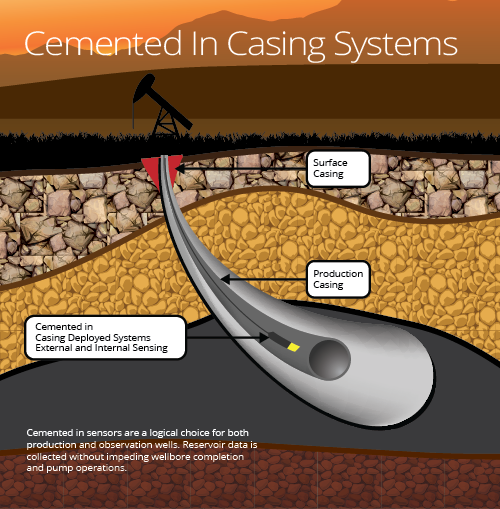
Figure 2: Cemented In Casing Systems Diagram
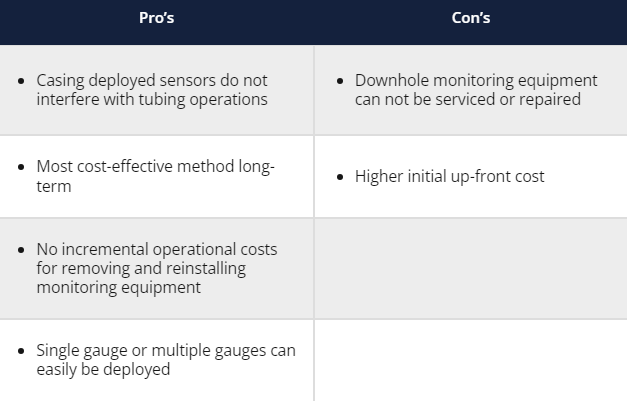
Tubing Conveyed
In this scenario, the downhole gauges are attached to the production tubing. Depending on deviation and dogleg severity, various types of special over the collar cable protectors and centralizers are used to protect the instrumentation and cables.
Gauge carriers are designed to read annular or internal tubing pressure and above or below packers if required.

Figure 3: Tubing Conveyed Systems Diagram
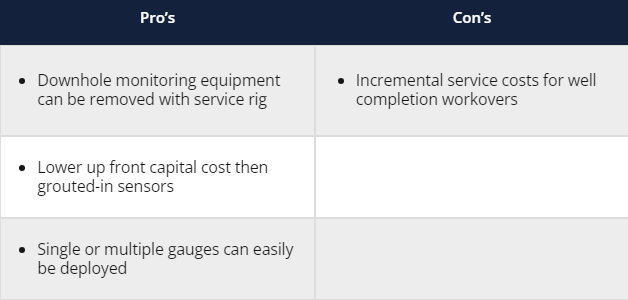
Suspended Wellbore
In this scenario, similar to wireline, downhole monitoring equipment is hung from the surface inside the wellbore. Weight bars, slips, and bombwells are used downhole to overcome surface pressure and provide protection for the downhole gauge. At the surface, lubricators and BOP’s are safely used for pressure control.

Figure 4: Suspended Wellbore Systems Diagram
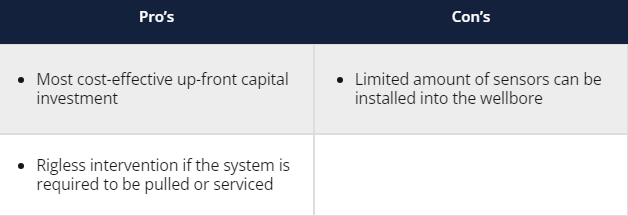
Conclusion
It’s critical to pick the right partner for your Carbon Capture & Underground Storage Measurement Monitoring and Verification Plan as it relates to downhole pressure / temperature and fiber-optic monitoring.
It’s important to understand the differences between various types of sensors and their capabilities, as well as their long-term effectiveness. Picking the right deployment method is critical for both short-term and long-term monitoring objectives.
If you would like to know more about how our monitoring systems can be utilized in CCUS systems or would like to speak with our technical sales team, application engineering, completion, and EI departments we encourage you to contact us!
Share This:
Next Article




